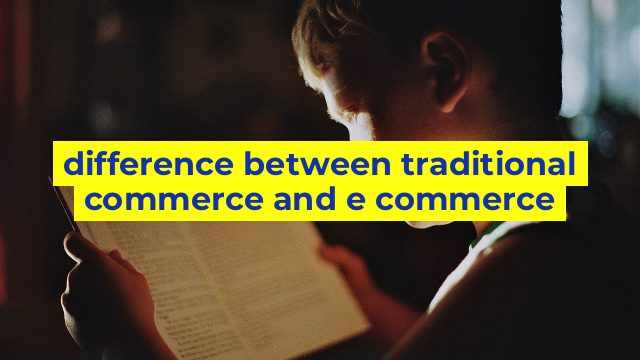The Difference Between Traditional Commerce and E-Commerce
When it comes to buying and selling goods, businesses have traditionally relied on face-to-face transactions in physical stores. However, the rise of the internet has led to the development of e-commerce, which allows businesses to sell products online. There are several differences between traditional commerce and e-commerce.
Accessibility
One of the most significant differences between traditional commerce and e-commerce is accessibility. Traditional commerce requires consumers to physically travel to a store, which can be a significant obstacle for those who live in remote areas, are disabled, or have mobility issues. E-commerce eliminates this barrier by allowing consumers to shop from their own homes from anywhere with an internet connection.
Costs
Another significant difference between traditional commerce and e-commerce is the costs associated with each method of commerce. Traditional commerce requires a brick-and-mortar storefront, which can be expensive in terms of rent, utilities, and maintenance costs. On the other hand, e-commerce only requires a website, which can be much cheaper to maintain. This cost difference can often result in lower prices for products sold through e-commerce.
Selection
E-commerce also offers a wider selection of products compared to traditional commerce. Brick-and-mortar stores are limited by their physical location and size, which can make it challenging to offer a broad range of products. E-commerce, on the other hand, can be used to sell a wide variety of products without the constraints of physical limitations.
Customer Experience
Traditional commerce often relies on sales associates to provide a personalized customer experience. In contrast, e-commerce relies on design and user experience to provide the same level of personalization. While some customers may prefer the personal touch offered by sales associates, others may prefer the convenience and ease of shopping online.
In conclusion, while traditional commerce has been the tried-and-true method for buying and selling goods, e-commerce has introduced new possibilities for businesses and consumers alike. With its accessibility, cost-effectiveness, wider selection, and personalized customer experience, e-commerce provides a different, yet equally effective approach to commerce that is rapidly gaining popularity.
Table difference between traditional commerce and e commerce
| Traditional Commerce | E-Commerce |
|---|---|
| Physical presence is required. | Physical presence is not required. |
| Brick and mortar stores are the primary sales channel. | Online stores are the primary sales channel. |
| Product selection is limited to the inventory in the store. | Product selection is vast and varied as the products are sourced from all over the world. |
| Operating hours are fixed. | Operating hours are 24/7. |
| Transaction process involves physical currency. | Transaction process involves digital payments, such as credit/debit cards or digital wallets. |
| Customer service is primarily face-to-face interactions with staff. | Customer service is primarily online or via email/phone. |
| Shipping and logistics are managed in-house. | Shipping and logistics are outsourced to third-party logistics providers. |
| Marketing efforts are primarily through local advertising. | Marketing efforts are primarily through digital advertising and social media platforms. |
